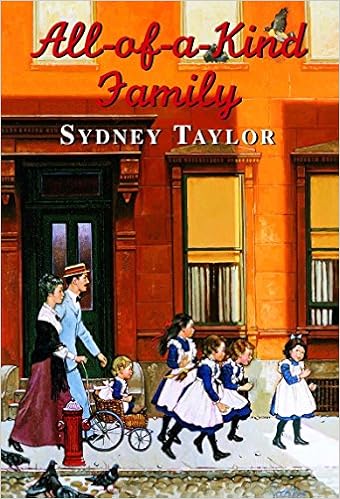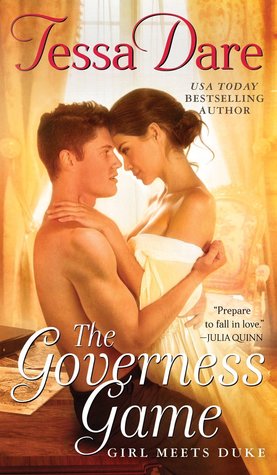
I have no recollection of how All-of-a-Kind Family arrived on my shelves. There’s no inscription in the front, no library book sale note, I didn’t write my name in it so I can’t do handwriting sleuthing. All I know is that I read this book over, and over, and over again in my youth and the book shows my care and use. Still, probably 20 years since the last time I read it, I know the story backwards and forwards and the lilting nature of Sydney Taylor’s writing came immediately back to my mind’s eye.
The book was first published in 1951, but the edition I have is from 1989. This book kicks off a series, and in it Sydney Taylor introduces us to a Jewish family living on the Lower East Side of Manhattan in 1912 – with five daughters ranging in age from 12 to 4. The book follows the five girls, Ella, Henny, Sarah, Charlotte and Gertie through a year in their life We are treated to things small, such as searching for hidden buttons while dusting the front parlor, or childhood traumas of lost library books and being quarantined and not allowed to see your friends so you don’t give them scarlet fever. The book also doesn’t shy away from the family’s faith, and is a primer on how to celebrate the Sabbath, Purim, Passover, and Sukkoth. Fast forward to my thirties when I’m the only non-Jewish person at my job who knows that Sukkoth (Succos) is the thanksgiving for the harvest lasting nine days and generally falling at the end of September after the heavy hitters of Rosh Hashanah and Yom Kippur.
This re-read had me interested in the author, so I did a little digging. As I suspected, this book is a version of the author’s own childhood. She became a writer by jotting down notes about the stories she would tell her daughter of her own life, following her career as a secretary, then working with the Lenox Hill Players theater group, and dancing with the Martha Graham Dance Company. After Sydney Taylor passed in 1978 the Sydney Taylor Book Award was created in her honor and is given each year by the Jewish Association of Libraries to a book for young people that authentically portray the Jewish experience.
This book was read and reviewed as part of the charitable Cannonball Read, where we read what we want, review it how we see fit (within a few guideline), and raise money in the name of a fallen friend for the American Cancer Society.






